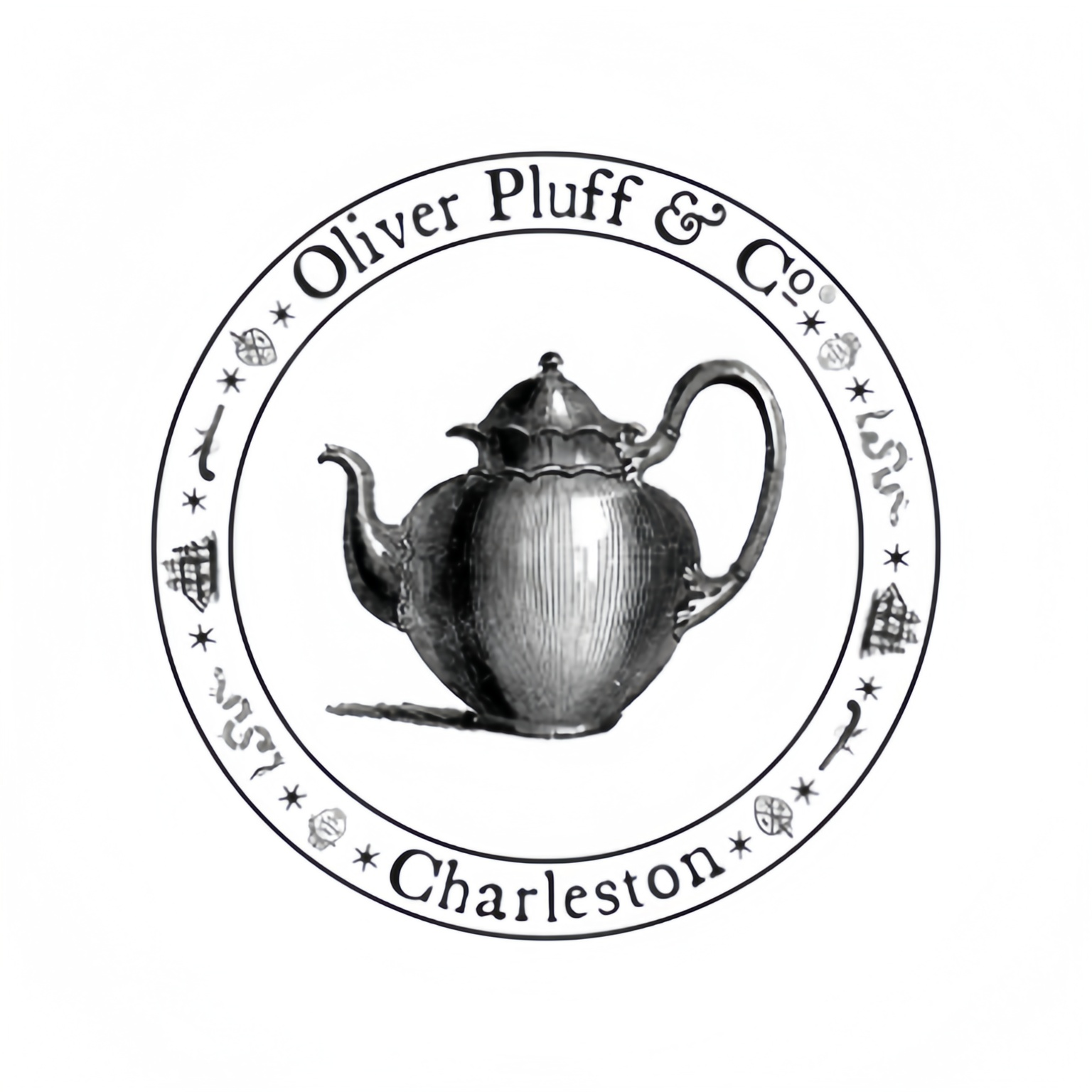Handmade Chinese Yixing Clay Teapot with Decorations
Experience the deep-rooted history of authentic Chinese with this handmade, decorated Yixing clay pot. The teapot’s results from tea brewing seasonings deepen as the Zisha gradually absorbs the thearoma and the flavour within the teapot. Origin from Yixing City, the famous land of craftsmanship as long as 7,000 years ago.
Application Scenario Expansion: Tradition and Modern Aesthetic Appreciation
The application of high-quality Yixing clay teapot, especially in the form of pure practical teapot, emerges out of the need for exquisite tea-drinking pursuit, cultural and aesthetic needs, in addition to irreversible pollution inhibition and closely related to tea quality needs. Which industries and which circumstances?
Although not industrial in the traditional sense, Yixing teapots play a role in a number of industries where authenticity, quality, and tradition are valued:
Traditional Tea Houses and Specialty Tea Shops — Yixing teapots naturally belong in these industries. High-end, traditional tea houses use Yixing teapots to deliver authentic Gongfu tea drinking experiences to their customers, showcasing the proper ways of brewing tea as well as the enhanced flavor that the seasoned clay brings out of their quality tea leaves. A set of delicate, beautiful Yixing teapots, especially those with ornate, intricate designs, adds a lot of value for customers visiting a tea house as they will feel as if the tea house is determined to offer them only the highest-quality, most authentic tea experience. Specialty tea shops focused on selling high quality loose-leaf teas will also stock Yixing teapots as an essential accessory to their product, as well as educate customers on the benefits of proper care and usage of these teapots.
Cultural institutions, museums and art galleries: Yixing teapots are generally recognized as amongst the world’s first-class ceramic teapots as well as outstanding artworks of Chinese ceramics. Organizations dedicated to the promotion of Asian culture and arts often display Yixing ware, inform about its history, show regional varieties, and present techniques of well-known artists. A teapot with ornamental galore is a good representation of artistic Yixing.
Luxury Hotel and Resort Sector: Luxury hotels and upscale resorts could offer authentic tea services with Yixing teapots as a way to elevate their guest experiences. The tea services could provide a cultural amenity for distinguished clientele, enhancing visitor experiences beyond offering the standard fare. There is a tranquility imbued in the ceremony preparing and serving of tea; that tranquility is further refined by the aesthetic beauty of a well-crafted pot, heightening the sense of opulence and thoughtfulness.
Retailers of Fine Home Goods and Asian Art: Aside from dedicated tea shops, retailers specializing in premium home goods, artisanal crafts, and Asian art often stock Yixing teapots. These retailers cater to customers who value handcrafted products, cultural artifacts, and functional art pieces for their homes or as distinctive gifts.
Educational institutions and workshops: Yixing teapots are used in tea schools, cultural workshops, and culinary institutes that teach students about tea culture, history, and brewing techniques. Students learn practical skills such as proper handling, seasoning, and brewing techniques related to Yixing teapots.

Problems Solved by this Product
The quality Yixing clay teapot, and particularly one with the attributes of this artful clay teapot, has tangible advantages that address some common difficulties people face in tea brewing and appreciation:
Poor Tasting Tea: Water composition, brewing time, and brewing vessel are all potential causes of poor tasting tea. One of the primary advantages of a Yixing teapot is that, due to its ability to season, the flavor of your tea improves with each brewing. Over time, and as your teapot is used, the porous clay will absorb the flavor and aroma of the tea, give you subtleties and intricacies of flavor that inert materials such as glass or glazed ceramic cannot. In particular, the ability of unglazed Yixing clay to smooth out harsh notes and add desirable characteristics is striking with dark teas like Pu-erh, Oolong, and black tea.
Trouble keeping the best temperature to brew tea: Each type of tea has its own brewing temperature that it should be brewed at in order to extract all of the tea’s flavor while not stewing it and making it bitter or weak. Yixing clay is well known for its heat retention and once the teapot has been heated, it will retain a constant temperature over multiple infusions–great for high-heat requiring teas like aged Pu-erh or for Gongfu type teas which are brewed many times in short intervals and require constant temperature.
Enlivening the Imagination through an Artful Practice of Tea: In this day and age, in our aesthetically deprived and fast paced society, drinking tea can often become a hurried matter. With a beautiful, hand-crafted Yixing teapot, the drinker is allowed the opportunity to slow down and enjoy a more participatory experience – beginning with the very first step of warming the pot with hot water, to placing the leaves in, adding the water, and lastly by gazing at the recessed “rise” of the pot as it swells into a full infusion. In and of itself, this is already a satisfactory practice of mindfulness. The artist’s added touch provides yet another.
Short lifespan of teaware: many contemporary teaware chip, stain, or lose their aesthetic appeal after a short period of use. A well-built Yixing teapot, with proper care, is highly durable and meant to last. Additionally, it is designed to appreciate with age: proper seasoning increases the value and beauty of the teapot. As such, a Yixing teapot can be enjoyed for decades, even generations.
You Lose Connection to Cultural Roots: For those who may have curiosity about the history and tradition of tea, the Yixing teapot allows tea drinkers to connect with a Chinese tea culture that stretches back hundreds of years. It enables the user to participate in a practice that has been sorted out and perfected with time, allowing people to cultivate an appreciation for the legacy of the artistry behind their humble daily cup.
Environmental Concerns: Yixing teapots are durable and reusable; therefore, they do not require constant replacement, making them an environmentally friendly choice over more wasteful brewing vessels or disposable alternatives (Gonzalez, 2022, p. 21).

FAQ: YOUR YIXING TEAPOT
Here are answers to some of the questions future owners have about Yixing clay teapots.
Yixing clay, or Zisha (“purple sand“, when literally translated into English), is a type of clay found only around Yixing city in Jiangsu province, China. The clay is special because of its composition of minerals (such as a high iron content) and distinctive granular structure. The clay becomes hard and relatively impermeable after it’s been fired at high temperatures (usually between 1100°C and 1200°C), but it remains somewhat porous. It’s this porosity that makes Yixing teapots special: they absorb small amount of the tea’s oils and aromas over a long period of use, developing a “patina” or “seasoning” inside the teapot. The seasoning interacts with future brews of the same type of tea, slightly enhancing it’s flavour, aroma and mouthfeel. Unlike glazed ceramics teapots (e.g. porcelain) or glass teapots, Yixing clay teapots (and other unglazed, high-temperature fired teapots like Bankoyaki and Chaozhou teapots) “breath,” which many tea drinkers claim helps mellow the tea and allow the flavour of the tea to improve with each brew over time.
Seasoning or “opening the pot” is an important process. The most prevalent method involves multiple steps:
a. Rinse: Rinse out the inside and outside of the teapot thoroughly with hot water to remove any remainances of dust or clay from the crafting process. b. Steep: Add a large amount of the type of tea you are preparing to dedicate this pot to, fill the pot with boiling water and immediately pour it out. After this, add boiling water into the pot once again and let it steep for several hours (some say over night). Repeat this 2 or 3 times. c. Boil: (Recommended, but optional): Some people gently boil the teapot in a large pot of boiled water with tea leaves of the type of tea intended to use with for 30 minutes to an hour. Make sure the pot is submerged in water and pad the bottom of the pot to avoid damage to it. Allow to cool in the water. d. Rinse and Use: After seasoning the pot, rinse it with hot water. The pot is now ready to use on a regular basis.
The first seasoning is to help clean the pores of the pot and begin the process of the pot’s clay absorbing the essence of the tea. (Note: Never use soap during any part of this process.)
Yixing teapot care is straightforward and can be summed up in one very important rule: never use soap. At the end of each brewing session:
a. Discard Leaves: Discard any and all spent tea leaves immediately. Never leave wet leaves in your teapot for long periods of time – an otherwise perfect pot will grow mildewy or pick up off-flavors continuously in use. b. Rinse: Rinse both the interior and exterior of the teapot thoroughly with hot water. If needed, a soft cloth or brush (specifically made for teapots) can be used to gently clean the surfaces, but under no circumstances should one scrub vigorously. c. Wipe Down Exterior: While still warm, the exterior of the teapot should be wiped down with a clean, soft cloth. This will both help distribute the tea oils that have risen to the surface, as well as aid in the formation of the patina. d. Air Dry: Leave the teapot and lid, separately, on a tea tray or drying rack. They should be allowed to air dry completely before they are stored. It is important that teapots are given adequate fresh airflow and are not stored in dark and stuffy areas to prevent mildew.
Never use soap, detergents, or abrasive cleaning tools as the porous clay will absorb them and permanently mar the character of the tea brewed.
No, it’s recommend to use one Yixing teapot for one type or category of one tea. For example, one pot will be used only for raw Pu-erh, one for roasted Oolong, one for black tea. Because the clay will absorb the characteristics of the tea, brewing different types in the pot will eventually mix the flavors that are absorbed in the clay, produce a muddled flavor profile, and prevent a well-honed and pure seasoning for any one type of tea.
Yixing teapots are customarily and ideally used for:
Pu-erh Tea (Raw and Ripe) – The porosity aids in mellowing the tea and developing the earthy complex flavors.
Oolong Tea (especially the heavier, darker roasted Oolongs): The heat retention is excellent for extracting the rich aromas and flavours.
Black Tea (hong cha): Yixing pots can smooth out black tea, offering up malty, or fruity notes.
Many people still brew green or white teas in Yixing pots, though porcelain or glass is often recommended by many others instead as the flavors of Yixing clay may slightly alter the flavor of lighter, more delicate, or floral teas and create a slight roasted taste to them which prevents fresh and floral fragrances from showing up properly.
The exquisite patterns are resulted from great artistic handiwork. Some common methods include:
Carving (Ke Hui): Patterns are carved into the clay surface before the teapot is fired.
Etching: Similar to carving but the lines tend to be more delicate.
Applique/Molding: Pre-formed clay pieces in the shape of dragons, flowers or calligraphy, etc. are applied to the teapot body.
Inlay: Different colored clays or other materials are inlaid into the surface.
These are primarily decorative designs and exemplify the makers skill. They do not degrade the brewing function of the teapot so long as they are well executed and do not ruin the integrity of the pot’s structure or lid fit. In fact, the texture of the designs can increase the tactile pleasure of interacting with the teapot.
Yes. The Yixing teapot is widely believed to be the original vessel for Gongfu Cha (功夫茶) or commonly referred to in English as the Chinese tea ceremony. The heat retaining properties, seasoning properties and sizes are ideal for Gongfu style brewing, where you might use hotter water than usual, use more leaves in a smaller vessel, steep in quicker successions, trying to extract as much of the flavour, aromas, and texture as you can, makes it similar to various other methods of brewing and steeping throughout the world, but the added aesthetic beauty and the gongfu of using a nice pot that’s seasoned for that tea only, makes it eerily similar to what we refer to as ancient-style gongfu tea.
Authenticity may be difficult to determine, as copycats can be rather clever. Some features of a authentic, high quality Yixing teapot include:
Clay texture – Authentic Zisha clay Yixing teapot will have a slight touch of granularity/sandy-ness to its clay. They wouldn’t be as smooth as a gaiwan or porcelain.
Water Absorption: If a yixing teapot is seasoned or properly fired, hot water poured on the teapot exterior should absorb into the teapot fast. The wet patch should not stay and go away/dry/evaporate quickly.
Sound: Lightly tap edge of the lid against the body of the pot. A real Yixing pot will make a subdued resonant thud there shouldn’t be a high pitched ring (this is sound of porcelain or heavily glazed ceramic).
Lid Fit: Smooth and Snug (but not too tight) a good fit into the opening of the pot, and a good seal if spout is covered and lid hole is covered, flow from spout should stop or slow signifigantly.
Craftsmanship: Think about its overall form, how well-balanced it feels, how well the spout pours, whether the handle is comfortable and how well the difficult decoration is accomplished. A good pot is well-finished.
Artist’s Seal: A genuine Yixing teapot will typically have the seal of the artist who fashioned it on the bottom of the teapot, in the interior of the cover, or somewhere close to the handle. Researching the artist may result in the authentication or identification of provenance.
Reputable Source: Buying from established dealers or directly from renowned artists or studios in Yixing is the best way to ensure authenticity.
Selection and Comparison Suggestions: Find Your Right Pot
Choosing the right teapot is subjective. This “Chinese Yixing Clay Teapot with Intricate Designs” teapot has a particular combination of attributes. Here’s how it contrasts with a few of the most common tea brewing devices if you’re trying to determine whether it’s right for you:
| Feature |
Yixing Clay Teapot (Our Beginner Model) |
Glass Teapot |
Ceramic/Porcelain Teapot |
Stainless Steel Teapot |
| Flavor Impact |
Enhances over time, absorbs tea oils |
Neutral, shows tea color |
Neutral, no flavor absorption |
Can sometimes impart metallic taste |
| Heat Retention |
Excellent |
Moderate |
Good |
Good to Excellent |
| Porosity |
Porous (absorbs flavor) |
Non-porous |
Non-porous (often glazed) |
Non-porous |
| Dedicated Tea |
Recommended (one type per pot) |
Suitable for all teas |
Suitable for all teas |
Suitable for all teas |
| Aesthetics |
Rustic, natural, develops patina |
Modern, clear, showcases tea |
Varied, often elegant or decorative |
Modern, functional |
| Durability |
Durable with care, but can break |
Fragile |
Can chip or break |
Very durable |
| Cleaning |
Water rinse only, no soap |
Easy to clean with soap |
Easy to clean with soap |
Easy to clean |
| Price (Beginner) |
Moderate |
Low to Moderate |
Low to High |
Moderate |
| Best for… |
Developing nuanced flavors, Gongfu Cha |
Visual appreciation, all tea types |
Versatility, everyday use |
Durability, heat retention |
Data Source: Evaluation based on ISO 14507:2018 (Ceramic and glass product standards) and PGI specifications for Yixing products from Jiangsu Province Protected Geographical Indication registry (http://www.cnipa.gov.cn/art/2020/7/1/art_2225_494.html)
Compared to Glazed Ceramic or Porcelain Teapots
Flavor Interaction: Glazed pots are inert; they do not interact with the flavor of the tea. Yixing clay actively seasons, in a manner that can enhance the tea as it becomes seasoned. If you brew many different types of tea and want a neutral vessel that will not become seasoned, glazed is more versatile. If you want a vessel that will deepen the flavor of particular teas over time, Yixing offers this benefit.
Heat Retention: Yixing clay generally retains heat better than porcelain, which can be advantageous for teas that benefit from higher temperature brewing.
Aesthetic/Patina: a glazed pot will maintain the finish it was purchased with while a yixing pot will build a unique patina to it that becomes more beautiful the more you use it. This specific pot features a beautiful design to its body that will visually transform as the pot seasons.
Durability & Care: both are durable enough. But Yixing needs to be taken care of in a particular way where you don’t use soap and just rub it with your fingers. But glazed pots are less of a hassle to clean and tend to absorb odors less easily if you don’t dedicate them to a single tea.
Price: A good traditional handmade Yixing teapot with elaborate design is often more expensive than a commercial glazed teapot, as a result of its rare material and inexplicable craftsmanship.
Vs. Glass Teapot
Transparency: glass is transparent, which enables you to see the unfurling tea leaves and the liquor color. It gives you more fun from the visual perspective of brewing, especially when you brew green-tea and white-tea. Yixing, in contrast, is opaque.
Flavor Interaction: Glass by itself is completely non reactive. Like pottery with a lead free glaze, glass does not season, or otherwise affect flavor.
Heat Retention: Glass has relatively poor heat retention compared to Yixing clay.
Durability: Glass is easier to break than fired Yixing clay.
Best use: Glass scores ahead over yixing. They’re perfect for teas, particularly the more delicate green, white or flowering teas as they display the beautiful leaves and impart no flavor of their own. Yixing teapots are best for tea that need more seasoning and better heat retaining.

Comparing with other yixing teapots (plain forms) Artistic value is the intended difference (plain vs. carving/engraving/decorations). Plain forms have the advantage of reflecting primary artistic value on the form and texture of the clay, while most decorated forms can be considered as having extra artistic value other than the form and texture.
The level of craftsmanship: The making of the tanks requires specialized craftsmanship and additional time and labor in the manufacturing process (since such shapes must be realized by hand carving / sculpting / inlay), which makes these pots “indeed” rare and collectible.
Aesthetic Preference: Ultimately, it’s really a matter of your own aesthetic preference: do you prefer something simple and modest or stunning works of art with intricate details and designs?
Price: An elaborately designed Yixing teapot is usually sold for a premium compared to a similar plain pot, both because of the extra artistic work as well as complexity.
If you’re seeking something to enhance the flavor of particular dark teas, aid you in performing a traditional Gongfu tea ceremony, collect as a valuable investment that appreciates over time, and serve as a meaningful tool in the form of a useful and collectible artwork teapot, you won’t be disappointed with this meticulously crafted Yixing teapot!
Real Life Story / Case Studies: How Others Use Mysterious Yixing Teapot
Sometimes it helps to hear how other people use and appreciate their, in this case, Yixing teapot to really get an understanding if a Yixing like this special design dragon Yixing fits your use case. Names omitted for privacy.
The Connoisseur’s Daily Practice: Mr. Li is a years-long collector of aged Pu-erh that was looking for a teapot that would do his prized collection justice. He opted to go with this (top) design of Yixing and dedicate the teapot to his highest grade raw Pu-erh cakes in his collection. After only a couple of weeks of nearly daily use, he remarked that the teapot was notably smoothing out the initial astringency and elevating many of the deep earthy and woody flavors of the desired complexity. The matching layers of mysteriousness in the complex raw Pu-erh and the deep dragon undulations forming and deepening as oils from the tea layer on the pot created one more layer of appreciation for this rustic earthy tea. Bringing out the deep inherent characteristics of the tea, while serving as another simultaneous focus for nurtured appreciation of tea drinking as meditation and daily practice, this teapot became to him indispensable.
Raising the Tea House Experience: The owner of “Tranquil Streams Tea House” a popular tea house known for its authentic Chinese tea service, decided to acquire a handful of these elaborate Yixing teapots for some of their private rooms. They would brew their specialty high-mountain Oolongs and premium black teas in these quality teapots. Customers fell in love with them, at first sight, many asking where they came from and the meaning behind the designs. Not only did the teapots perform brilliantly under the test, brewing perfect temperature water for multiple infusions, but they played the role of an icebreaker and provided more traditional elegance to the setting. The owner noticed more and more positive feedback from his customers about their overall tea experience, crediting part of it to the quality and sophisticated appearance that their Yixing teapots delivered to the brewing process.
A Gifted Heirloom & Statement Piece: Although Ms. Chen does not regard herself as a craftsperson, she enjoys the simple pleasures of drinking tea and loves material history—she is an art historian who specializes in ceramics. Not only does she use this teapot every day to brew her favorite Dan Cong Oolong, she also considers it as an invaluable object in her arsenal of Asian artefacts. She had bought the teapot not quite knowing how it may have been made, but immediately knew that its surface was particularly skilfully carved. In fact, she had recognised particular motifs that are difficult to produce entirely by hand, and all these different ways of cutting into a clay are recognised as Yixing specialities. She brings the teapot out for her daily use, because the clay really brings out the unique floral and fruity notes to her beloved Oolong. And when the teapot is not used, Ms. Chen proudly displays it as a centrepiece of her study. It is always there, its place duly marked as a stunning reminder of the interplay between functional craft and fine art. On the one hand, the teapot always makes her smile because it
Starting a New Tea Hobby: This was a gift for my friend who had mentioned that he was interested in learning a bit more about traditional Chinese tea. He found himself to be intimidated by Gongfu tea, but was drawn to this teapot because of its intricate design and beauty. After his first cup of tea, he dedicated himself to learning how to properly use this teapot, putting it at the center of his new hobby, which increasingly attempts to marry the artistry and ceremony of brewing tea with the science of brewing and researching different teas. He finds the experience of seasoning the pot and watching as it becomes patina’d incredibly satisying, enriching both the taste of the tea and the culture that the tea belongs in.























Robert –
Finally a teapot that’s not intimidating holds just enough tea, clay feels nice. Recommend for starters
i****x –
I am highly satisfied with this purchase. Extremely easy to maintain and the character from the clay is maturing. The tea tastes better. This is a perfect starter.
hans dwi –
This is way simpler thank expected but it does is job decently enough. Clay ofcourse sucks heat from tea so with enough dunking you’ll get your brew out not problems. Nice one for the first buy
William –
I love how this tea pot looks and feels. The clay is very smooth and feels very warm. This is my first yixing teapot. Very excited!
Ezra Klein –
This teapot is very friendly to beginners . Simple shape,easy to clean ,clay itself can raise tea quite well .
a*****w –
Nice and easy to use for us beginners. The clay appears to be of good quality and the tea is hot. It is small but pitched perfect for me.